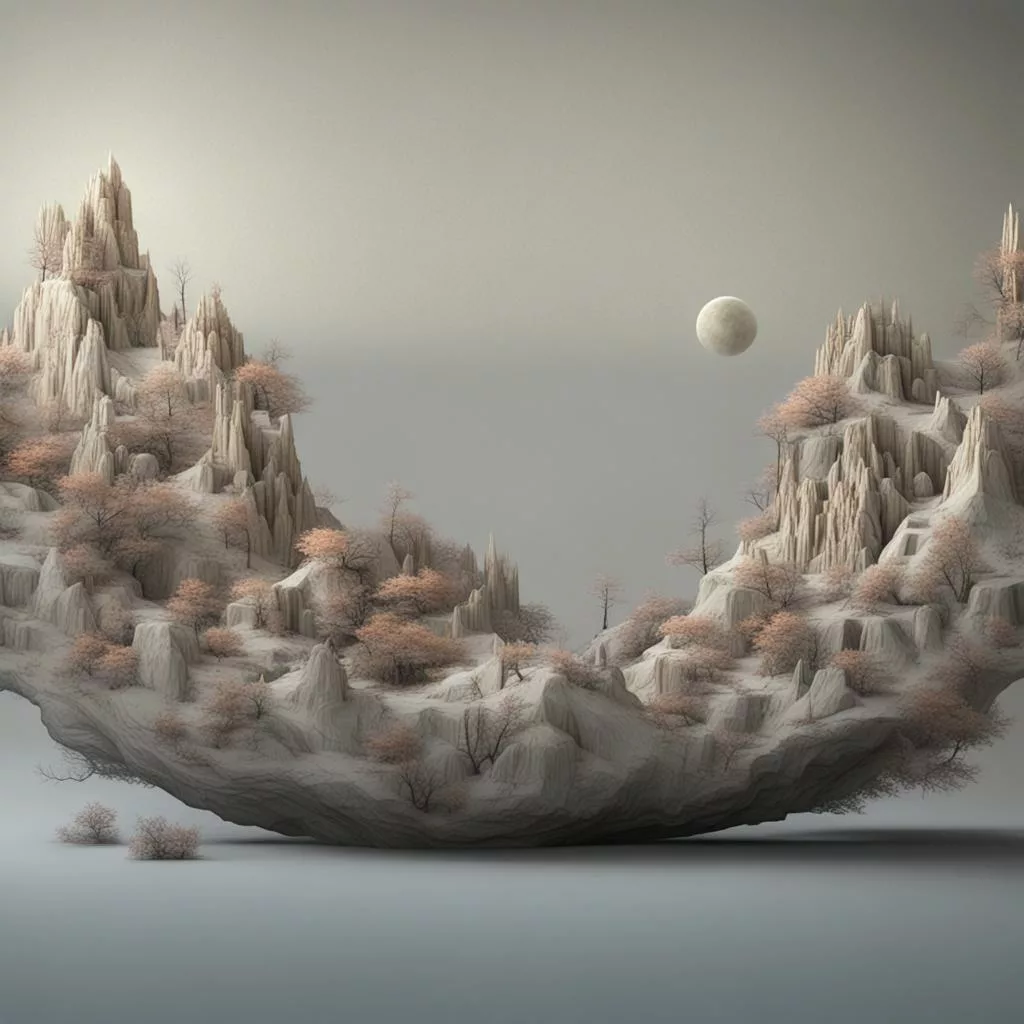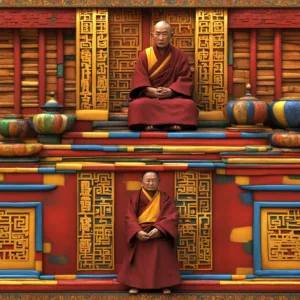
Impermanence in Buddhism, or Annica, means that compounded phenomena will cease to exist. Anything made of parts will eventually fall apart. It is one of the 3 Marks of Existence.
I first encountered transience as a teenager, when I nearly died in an explosion. Now obviously, we had older relatives and pets die before, but the experience of nearly dying myself changed me.
It’s considered necessary to explain transience because we have an illusion that our lives are permanent. We know logically, of course, and we experience impermanence, but in our minds, we don’t really embody that. We live as if we have forever. The Buddha and others are saying, ‘This won’t last, so make it meaningful.’
Table of Contents
Impermanence Synonyms
General Impermanence:
- Transience: This emphasizes the fleeting nature of things, their temporary existence.
- Fleetingness: Similar to transience, but highlights the swiftness of passing.
- Ephemerality: This refers to things that last for a very short time, often used for things considered insignificant.
- Mutability: This emphasizes the tendency of things to change and not stay the same.
- Flux: This signifies a state of constant change and movement.
- Instability: This focuses on the lack of permanence and the potential for change.
Impermanence with a Negative Connotation:
- Mortality: This refers specifically to the transience of human life.
- Carpe diem (Latin for “seize the day”): While not strictly a synonym, it captures the urgency associated with transience, encouraging you to make the most of the present moment.
Impermanence with a Positive Connotation:
- Wabi-sabi (Japanese aesthetic): This aesthetic embraces change and imperfection, finding beauty in the transient nature of things.
- Flow: This term, often used in psychology, describes a state of complete absorption in an activity, where the sense of time seems to disappear.
The best synonym will depend on the specific context in which you are using the word.
Impermanence / Annica buddhism (Anitya)
All phenomena are impermanent. As the Buddha said, they are “transient, evanescent, and constant.” Because they are compounded or brought together out of pieces, they are subject to decline and destruction. This concept leads into emptiness where things are not what they seem. They only appear to be discrete, singular entities. Whereas they are ‘mere appearance’ composed of parts, each of those parts, is its own mere appearance. All things arise and dissolve based on annica and the interdependence of existence.
The word is “annica.” It is one of the three marks of existence, along with suffering and not-self. Not-self and transience are closely related. In fact, they could be said to be the same thing. A self is a permanent situation, something that abides beyond and outside of time. If there is no self, there is nothing that abides outside of time without changing. Since all is change or impermanent, there is no self. This is translated from Pali Canon as “all conditioned things are impermanent, all conditioned things are painful, all dhammas are without self.”
Personally, I like contemplating the three marks of existence, and especially annica. It creates an experience of relaxation and peace, suffused with a slight melancholy. But it’s an awake, knowing-sense. I feel good and connected and want to engage. I feel connected because everything is impermanent. We’re all going to die. It’s a great equalizer, unlike wealth, social status, beauty, or fame, which disconnect us.
According to the Buddha, this transience is also a flow. It’s the flow of samsara or the karmic nidanas. It’s a constant cycle of death and rebirth. All things are subject to decay. Even the beings of the highest realms will eventually fall apart. Even the hell realms will fall apart. Everything ends. This also applies to what are called the skandhas, the constituents of the self. These two are consonant in a state of change or annica.
How to meditate like a yogi
and enter profound samadhi
All physical objects, all emotions, all thoughts, all experience, all relationships, everything will eventually end. Not only that, it is constantly ending by changing subtly in an ongoing manner. So what it was before is different. Therefore, it is already annica. Part of annica is seeing this subtle process of continuous change. That is what happens at the culmination of meditation and annica, when it begins to feel the real constantly changing and shifting quality of everything in existence.
If you crave permanence or need it to feel okay, it creates a lot of anxiety. And if you ignore it, it creates its own anxiety because we’re not willing to look at the truth. We’re disconnecte from the truth. From that point of view, the Buddha taught annica as a very important thing to contemplate.
Impermanence in Western Philosophy
Constant change is a concept that has been explored by some prominent thinkers in Western philosophy, although it’s not as central a theme as it is in Eastern traditions like Buddhism. Here’s a breakdown of some key figures and ideas:
1. Heraclitus (Greek Philosopher, 6th-5th BCE):
Famous for his saying, “panta rhei” (πάντα ῥεῖ), which translates to “everything flows.” This emphasizes the constant state of change in the universe. He believed fire represented the ever-changing nature of reality. Heraclitus’ ideas laid the groundwork for later Western thought on change.
2. Stoicism (Hellenistic Philosophy, 3rd Century BCE – 2nd Century CE):
Stoicism doesn’t directly focus on transience, but its core principles acknowledge the ever-changing nature of the external world. Stoics believe true happiness comes from focusing on what you can control (your thoughts and actions) and accepting what you can’t (external events). By accepting the impermanent nature of external things, Stoicism aims to cultivate inner peace and resilience.
3. Process Philosophy (19th-20th Century Philosophy):
This school of thought, championed by thinkers like Alfred North Whitehead, emphasizes the process of becoming over static states of being. Reality is seen as a dynamic web of relationships and events constantly in flux. Process philosophy offers a framework for understanding impermanence as a fundamental aspect of existence.
4. Deconstructionism (20th Century Philosophy)
This movement, led by Jacques Derrida, challenges the idea of fixed meanings and stable identities. Deconstruction argues that everything is constantly being interpreted and reinterpreted, highlighting the impermanence of meaning.
5. Existentialism (20th Century Philosophy):
While not explicitly focused on impermanence, existentialism acknowledges the ever-changing nature of human existence. Existentialists believe humans are free but also constantly faced with choices that shape who they become. This ongoing process of self-creation reflects a kind of impermanence in the self.
In Conclusion:
Summary Impermanence / Annica
| Concept | Description |
|---|---|
| Impermanence (Anicca) | A core Buddhist concept signifying the impermanent and ever-changing nature of all things. |
| Three Marks of Existence | |
| * Dukkha (Suffering) | Life inherently involves suffering due to transience and attachment. |
| * Anatta (Non-Self) | There is no permanent, unchanging self; we are a process of changing phenomena. |
| Connected Concepts | |
| * Change | All things are constantly undergoing change, physically and mentally. |
| * Imperfections | transience implies nothing is ever perfect or stays perfect. |
| * Letting Go | Understanding impermanence encourages letting go of attachment to things and desires. |
| Relation to Suffering (Dukkha) | Impermanence is a source of suffering because we naturally crave stability and cling to things that ultimately change or disappear. This attachment leads to disappointment and frustration. |
| Benefits of Understanding Impermanence | |
| * Reduced Suffering | We can reduce suffering by letting go of attachment. |
| * Appreciate the Present Moment | We can appreciate the present moment more fully. |
| * Cultivate Compassion | We can cultivate compassion for ourselves and others. |
| Practices to Cultivate Awareness of Impermanence | |
| * Meditation | Observing the impermanent nature of thoughts, emotions, and bodily sensations. |
| * Mindfulness | Paying attention to the present moment without judgment, noticing change. |
| Examples of Impermanence | |
| * Seasons Changing | Seasons changing |
| * People Aging | People aging and growing old |
| * Shifting Thoughts and Emotions | Our thoughts and emotions constantly shifting |
| Related Schools of Thought | |
| * Heraclitus (Greek philosopher) | Everything flows (panta rhei) |
| * Hinduism (concept of Anitya) | Concept of Anitya in Hinduism acknowledges impermanence. |
Impermanence Quotes
Eastern Traditions:
- Buddhism (Anicca):
- “All things are impermanent. All are subject to change.” – Buddha
- “Clinging to anything brings suffering.” – Buddha
- Hinduism (Anitya):
- “Change is the law of nature. Nothing stays the same.” – Bhagavad Gita
Western Philosophy:
- Heraclitus (Greek Philosopher):
- “No man ever steps in the same river twice, for it’s not the same river and he’s not the same man.”
- “Everything flows” (panta rhei)
- Stoicism:
- “Memento Mori” (Remember you must die) – A reminder of our mortality and the impermanence of life.
- Process Philosophy (Alfred North Whitehead):
- “The fact of the matter is that the world is a process.”
Poetry and Literature:
- John Donne (English Poet):
- “No man is an island, entire of itself; every man is a piece of the continent, a part of the main.” (Highlights the interconnectedness and transience of life)
- William Shakespeare (English Playwright):
- “Fair is foul, and foul is fair” (Macbeth) – Suggests the impermanence of beauty and the duality of nature.
Modern Sayings:
- “The only constant is change.” – Heraclitus (paraphrased)
- “Everything you touch is destined to fall. We are all just guests in this crazy hotel.” – Leonard Cohen (Songwriter)
Secrets of Meditation for Anxiety
Like millions of people, you may have suffered from anxiety for years. Meditation, yoga, peaceful music – it never works. It takes too long, and it’s not stable. Why? Because peace is treated as a cause for freedom, but it’s not – it’s the result. The cause to free yourself from anxiety is completely different.
Click now to Overcome Anxiety for good.
Symbols of Impermanence
- Falling Leaves: The changing seasons and falling leaves are a universal symbol of decay. They represent the inevitable cycle of birth, decay, and renewal.
- Sand Mandala: In Tibetan Buddhism, sand mandalas are intricate and beautiful patterns created with colored sand. The deliberate destruction of the mandala after its completion symbolizes the transience of all things.
- Wilted Flower: A wilted flower is a poignant symbol of death, highlighting the fleeting nature of beauty and life.
- Burning Candle: A burning candle represents the passage of time, with the flame slowly diminishing until it is extinguished.
- Broken Object: A cracked or broken object can symbolize the fragility of material possessions and the fragility of life.
- Waves: The constant motion and change of waves crashing on the shore is a powerful symbol of flux.
- Uroboros (Snake Eating Its Tail): This ancient symbol, found in various cultures, depicts a serpent eating its own tail. It can represent cyclical change, eternity, and the interconnectedness of all things, where endings become beginnings.
Related Terms to Impermanence
Related terms Annica
Core Concepts:
- Buddhism (Religion)
- Anatta (Non-Self)
- Dukkha (Suffering)
- Mindfulness
- Acceptance
- Letting Go
- Wabi-Sabi (Japanese Aesthetic)
Practices:
- Meditation
- Vipassana Meditation
- Breathwork
- Stoicism (Philosophy)
Benefits:
- Reduced Stress and Anxiety
- Increased Self-Awareness
- Appreciation for the Present Moment
- Greater Compassion
- Emotional Resilience
Related Searches:
- How to deal with impermanence
- Accepting impermanence
- Impermanence and suffering
- Buddhist teachings on impermanence
- Mindfulness practices for impermanence
- Wabi-Sabi and impermanence
Additional Notes:
- Impermanence in other cultures, such as “Memento Mori” (Stoic practice of remembering you must die).
- Wabi-Sabi is a Japanese aesthetic that embraces impermanence and imperfection, potentially linking impermanence to artistic appreciation.

May all beings be happy
May all beings be peaceful
May all beings be safe
May all beings awaken to the light of their true nature
May all beings be free







